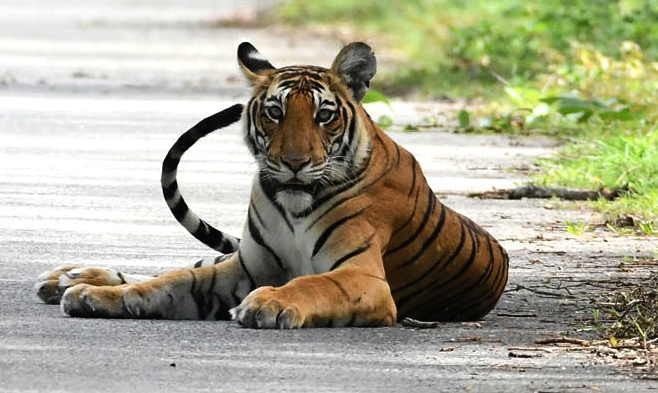The staffers at the Karnataka Forest Department made the best use of pandemic, lockdown and tourist restrictions by conducting the camera trap census as part of their exercise for the National Conservation Authority (NTCA), as it is determined to conduct the tiger census in December and release the new estimate reports at the next World Tiger Day (April 29, 2022).
Despite being a shortage of cameras for the exercise, most of the tiger reserves have already completed the camera trap estimations during March-May, still. Reserves and wildlife sanctuaries have shared the camera, and that’s not all, due to the fear of the onset of the third wave of COVID-19, the Ministry of Environment and Forests and Climate Change (MoEFCC) and Wildlife Institute of India (WII) are working together on the use of more technology and restricting the number of volunteers for on-ground census exercises like direct sighting.
After the assessment of the preliminary reports, staffers at the Karnataka Forest Department are expecting an increase of 5-10 per cent in the tiger population, in comparison with the previous census. Reasons like reduction in poaching cases, increase in conservation measures and the pandemic can be some of the contributing factors. Members of WII and NTCA are, however, stating the northern Western Ghats from Kali Tiger Reserve to Goa, promising to show a good rise in the population.

“Since Karnataka is not showing any interest in declaring more tiger reserves, despite having promising numbers like in Cauvery Wildlife Sanctuary and Kudremukh. The next potential area to be declared as a reserve is Wayanad Wildlife Sanctuary. Declaring this region will also help in better protection towards the borders of Karnataka.”, said a senior official at NTCA.
As Qamar Qureshi, a scientist at WII, says, “Work is on to start the tiger estimation by December 2021 and complete it by January 2022. Camera trap estimations have already started in most reserves. Emphasis is more on using mobile phone technology for census like M- Stripe, this year. Calling volunteers depends on the pandemic situation and the third wave. They used 50 per cent technology for the census, this time the aim is to increase it to 90- 100 per cent, depending upon the areas, like in Karnataka we can use it 100 per cent,”.
He pointed out the potential in northern and western ghats in comparison with the central and southern parts. He added how this year they are expecting to cover more areas of the census, including northeastern India.
“Everywhere we are expecting a better outcome in tiger numbers. Deaths are natural, but protection measures have improved. The outcome is likely to be announced on July 29, 2022, and we expect the training of trainers to be held in August first week in Mudumalai, this year.”, said N S Murali, IGF, Southern Zone, NTCA.
Karnataka Forest Department officials have already been recording more numbers of striped cats so far, according to camera trap estimates. The final report is still the last call, which is being prepared and sent to NTCA.
Tazeen Ansari

